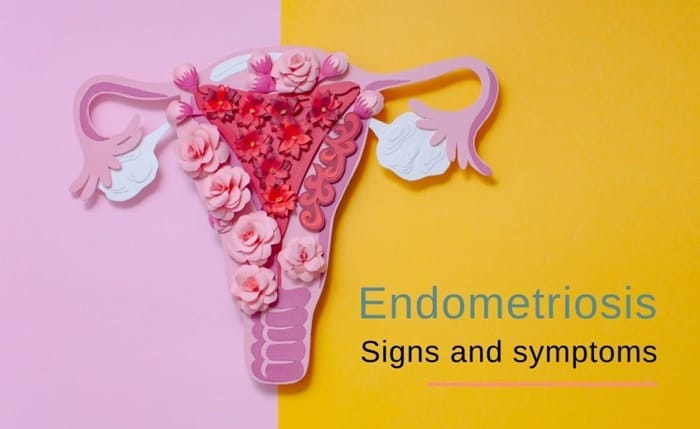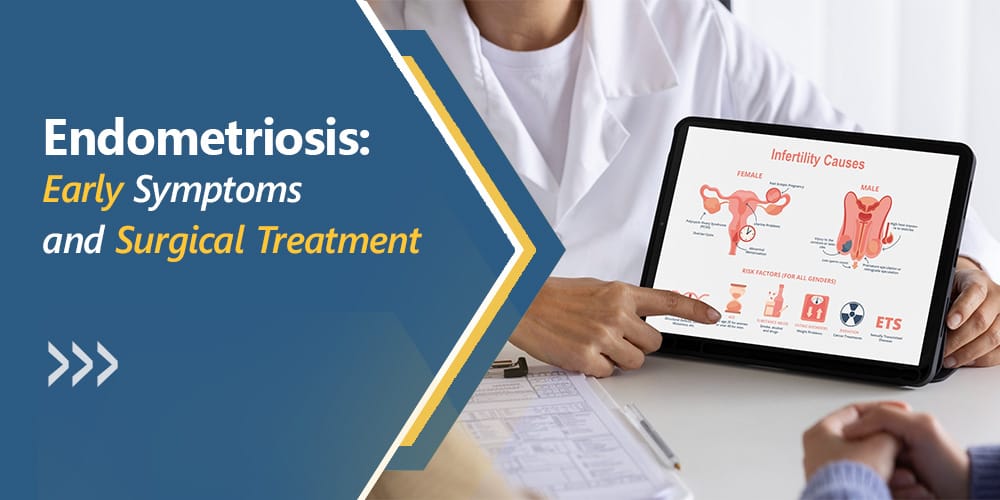Endometriosis affects millions of women worldwide, but because its signs are so complicated, it is often not detected. This condition is characterized by the growth of tissue outside the uterus that resembles the lining of the uterus. It can cause significant discomfort, problems with fertility, and a variety of other symptoms that might hide its presence, making diagnosis difficult. I’ve made it my mission to solve this problem.
I, Dr. Pankhuri Gautam, have spent the last ten years working as an obstetrician, pelvic surgeon, and gynecologist in Jaipur. Because I am interested in understanding and treating conditions like endometriosis. I learned the basics of medicine at JLN Medical College Ajmer, then got specialized training in surgery at PGI, Rohtak, and finally improved my skills with a DNB. These experiences have prepared me to fight this tricky enemy.
Here, I will share the seven key signs of endometriosis, which I’ve learned through years of dedicated study and hands-on treatment.
7 Symptoms of Endometriosis
As a specialist dedicated to the fight against endometriosis, I’ve seen personally how this condition gradually affects numerous lives. To clarify this frequently misdiagnosed illness, I will outline seven signs of endometriosis below. Knowing these signs is the first thing that will help you get the correct diagnosis and treatment, leading to a better, more comfortable life.
#1 – Period-Related Symptoms
Some signs of endometriosis show up when your period is coming or has already started. The most common signs are painful periods, last a long time, and are heavy.
- Painful Periods
One of the most apparent signs of endometriosis is painful cramping that doesn’t go away even after taking a few non-steroidal anti-inflammatory drugs (NSAIDs) like Motrin or Advil.
Your period pains might start a few days early and last longer than the first few days of your flow. You might not be able to do everyday things because of the pain.
- Heavy Periods
For people with endometriosis, their period doesn’t just cause constant pain. Another common sign of endometriosis is bleeding too much. During your period, you may soak through your pad or tampon every hour or two.
- Long Periods
Most periods last between three and five days, but they can also last up to seven days, which is normal. If yours lasts longer than that, it could be a sign of endometriosis.
#2 – Painful Sex
When endometrial tissue leaves the uterus, it can adhere to various organs and lock them in place, causing inflexibility, which might lead to excruciating sex experiences.
Intercourse right before your period is painful in early cases of endometriosis. In situations of advanced endometriosis, having intercourse is constantly uncomfortable. Arousal and orgasms are both painful—even during masturbation.
#3 – Painful Bowel Movements and Urination
Endometrial tissue can stick to the bowels, making even simple things like going to the toilet painful. The symptoms of bowel endometriosis might differ from person to person and include nausea, bleeding from the rectal area, cramping in the intestines, diarrhea, and constipation.
#4 – Nausea and Fatigue
Imagine having the worst case of PMS you’ve ever had. You probably felt exhausted, achy, and maybe even sick for a few days. Imagine that a hundred times bigger, and you’ll have a better idea of what it’s like to have endometriosis symptoms during your period.
Endometriosis can make you feel sick, throw up, and be tired all the time, but it’s worse around menses.
#5 – Migraines
Just the pain of a migraine headache is unbearable; it can last for days and make you feel sick, blur your vision, and other problems. Researchers have found that women who have endometriosis are more likely to get migraines.
#6 – Internal scarring
Even though they are not always obvious, scars can develop inside your body and cause organs and tissues that shouldn’t be together to adhere to one another. Internal scarring can cause belly pain, bloating, constipation, gas, etc.
#7 – Infertility
According to some studies, 30 to 40 percent of women with endometriosis have trouble getting pregnant. Some studies disagree with this, but they do say that women under 35 who have endometriosis are twice as likely not to be able to have children.
In either case, if you have the problem, you’re more likely to have trouble getting pregnant. Many women who have periods don’t know they have endometriosis until they go for fertility treatment.
What Is The Treatment For Endometriosis?
There are several ways to treat endometriosis, such as:
- Medications like NSAIDs, contraceptives, or painkillers
- Oral contraceptives, progestins, or other drugs that control hormone levels
- Infertility treatments
- Surgery to get rid of adhesions, lesions, or scar tissue
- Other complementary methods include meditation, physical therapy, acupuncture, and diet changes.
When To See a Healthcare Provider?
For people who think they might have endometriosis, knowing when to see a doctor is very important. I, Dr. Pankhuri Gautam, can’t stress enough how important it is to pay attention to your body and act on what it tells you. It’s essential to see a doctor if you have chronic pelvic pain, especially if it gets in the way of your daily life or happens along with symptoms like heavy menstrual bleeding, painful periods, pain during sexual activity, or trouble getting pregnant. These signs could be signs of endometriosis or other serious health problems that need to be checked out by a doctor.
Having a family history of endometriosis is also something you should talk about with your doctor since the disease can be passed down genetically. Early action can significantly affect how well symptoms are managed and the prevention of potential complications.
When patients come to me with symptoms suggestive of endometriosis, I begin a thorough diagnostic process to diagnose endometriosis. It starts with a detailed medical history and physical examination, followed by recommended imaging tests, such as ultrasound or MRI, to provide insights into endometrial-like tissue outside the uterus. In some circumstances, laparoscopy, a minimally invasive surgical method, is the gold standard for detecting endometriosis since it allows for direct tissue visualization and immediate removal or biopsy.
This diagnosis process is essential for making a personalized treatment plan that fits each patient’s needs and health goals. Getting in touch early with a healthcare provider not only helps with a correct diagnosis but also makes treatment a lot better. I promise to help you through this process with understanding and knowledge, ensuring you get the care and support you need to deal with the challenges of endometriosis. Taking the step to consult me at my clinic, Endoscopia Women Care, can begin a path toward relief and recovery.
Conclusion
Spotting the signs of endometriosis is very important for diagnosing it and starting effective treatment. I, Dr. Pankhuri Gautam, am committed to raising knowledge and understanding of endometriosis because it significantly affects women’s health and well-being.
If you think you might be showing any of the seven signs we discussed, you should speak to a doctor, look into your diagnostic choices, and consider a personalized treatment plan. With the right help and advice, you can deal with endometriosis and improve your life. With my years of experience, I can help you overcome this condition and lead an everyday life. If you need more help or information, feel free to get in touch.






